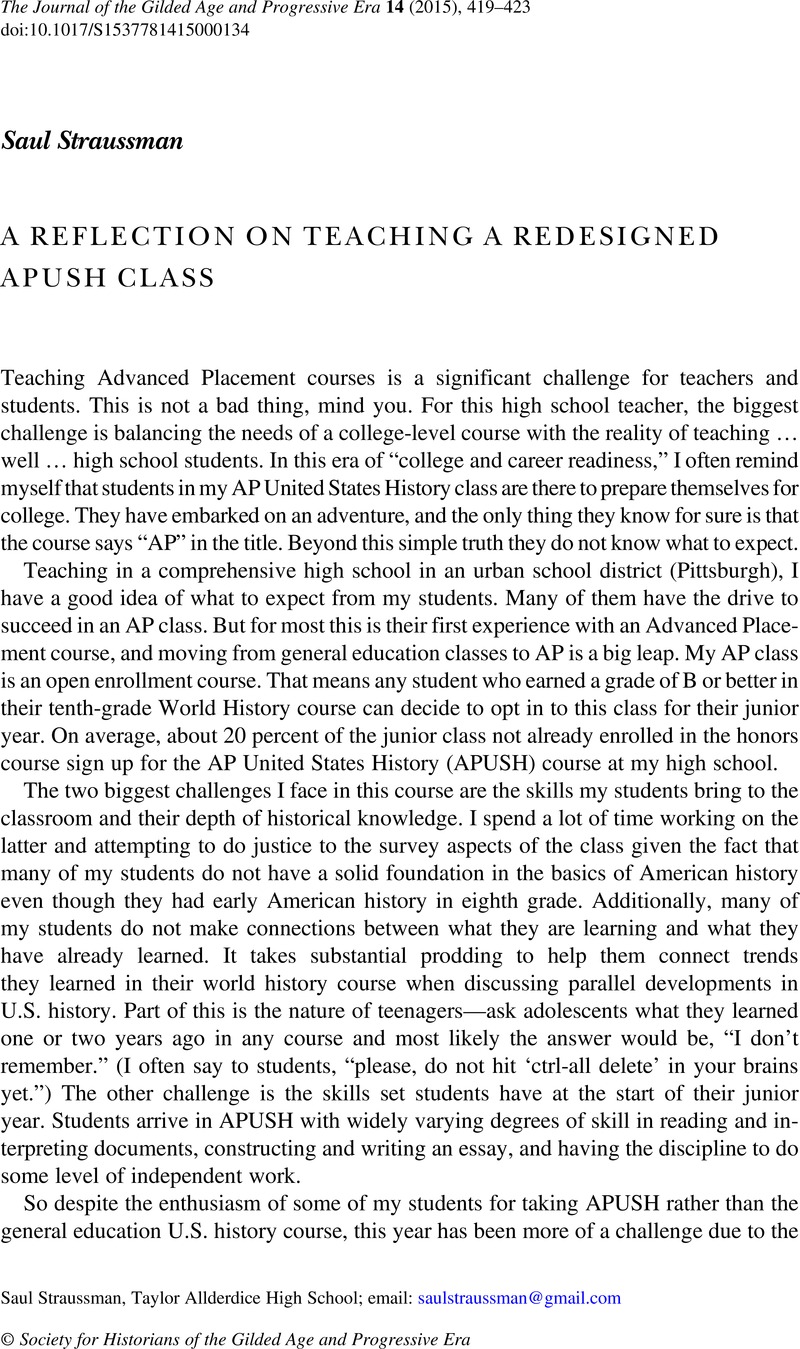No CrossRef data available.
Article contents
A REFLECTION ON TEACHING A REDESIGNED APUSH CLASS
Published online by Cambridge University Press: 22 July 2015
Abstract

Information
- Type
- Teaching Forum: Pedagogy and Controversy in The New Advanced Placement U.S. History Framework
- Information
- Copyright
- Copyright © Society for Historians of the Gilded Age and Progressive Era 2015
References
NOTES
1 A few of the documents we analyze include excerpts from Burton J. Hedrick, The Age of Big Business: A Chronicle of the Captains of Industry (New Haven: Yale University Press, 1919); Henry D. Lloyd, “The Story of a Great Monopoly,” The Atlantic, March 1, 1881, http://www.theatlantic.com/doc/188103/monopoly; “Andrew Carnegie: The Gospel of Wealth, 1889,” http://www.fordham.edu/Halsall/mod/1889carnegie.asp; and Henry George, “Of the Effect upon Individuals and Classes” from Progress and Poverty: An Inquiry into the Cause of Industrial Depressions and of Increase of Want with Increase of Wealth: The Remedy (1879; Garden City, NY: Doubleday, Page, 1926), 445–51, cited in Kevin J. Fernlund, ed., Documents to Accompany America's History, vol. 2. (Boston: Bedford/St. Martin, 2008), 55–57.
2 Pittsburgh Public Schools adopted America's History, 6th ed. by James Henretta, David Brody, and Lynn Dumenil (Boston; Bedford/St. Martin, 2008), which clocks in at 1,016 pages. And while I too note to my students that there are lots of pictures and graphics on most pages, I cannot help but notice that the average AP European history textbook has approximately 600 pages of text and covers 200 additional years of history.
3 Jonathan Burack, “The AP US History Wars: Is a Peace Process Possible?” Perspectives on History, December 2014, http://www.historians.org/publications-and-directories/perspectives-on-history/december-2014/the-ap-us-history-wars.

